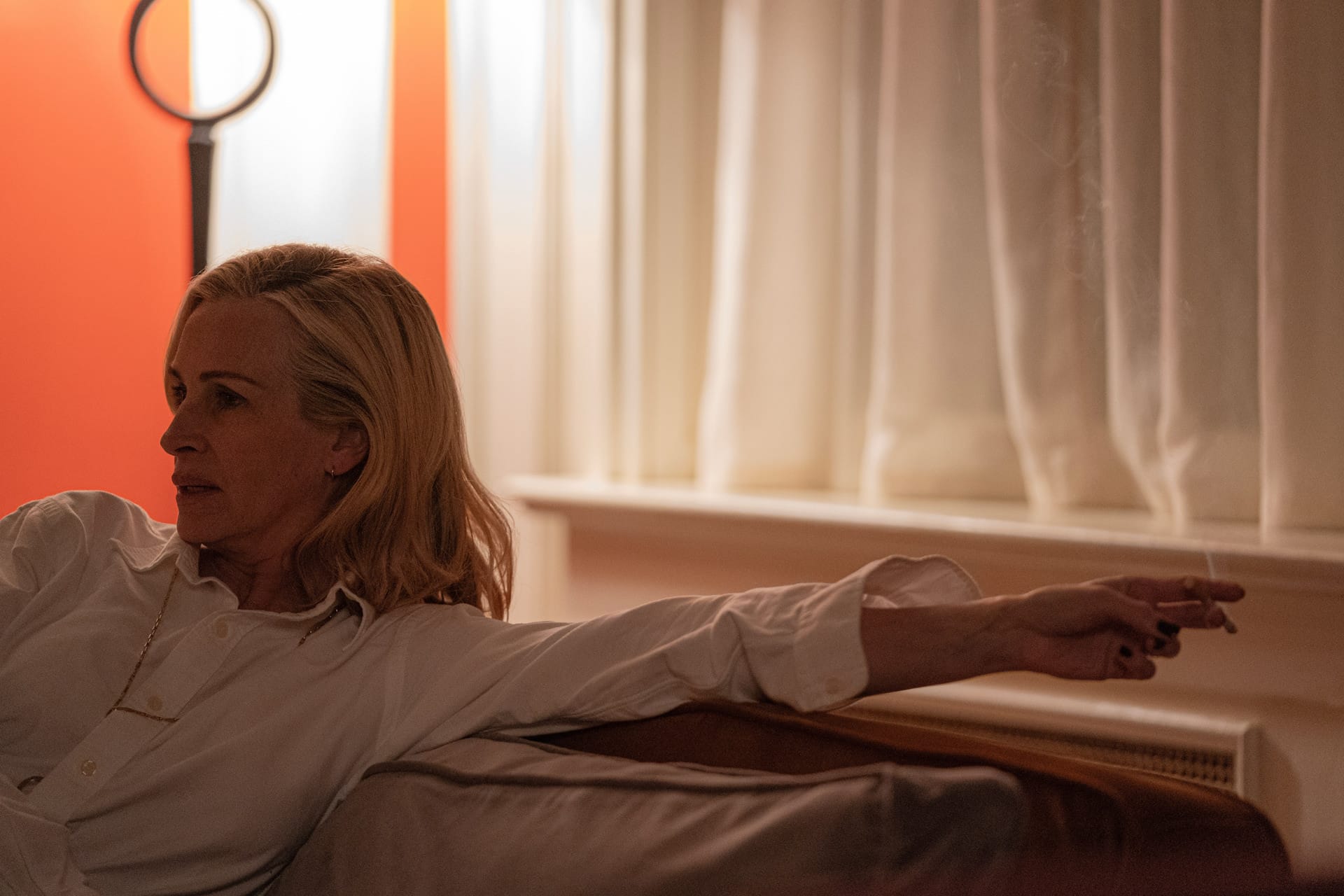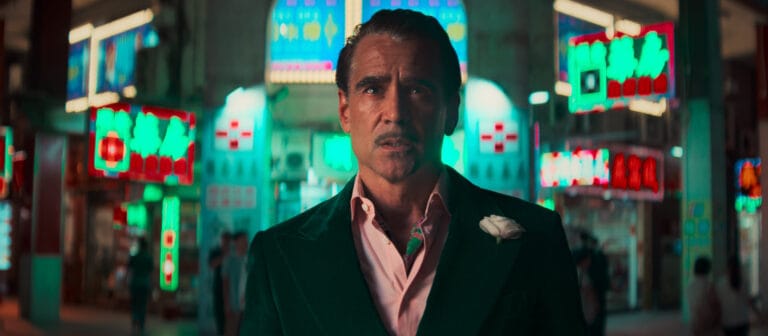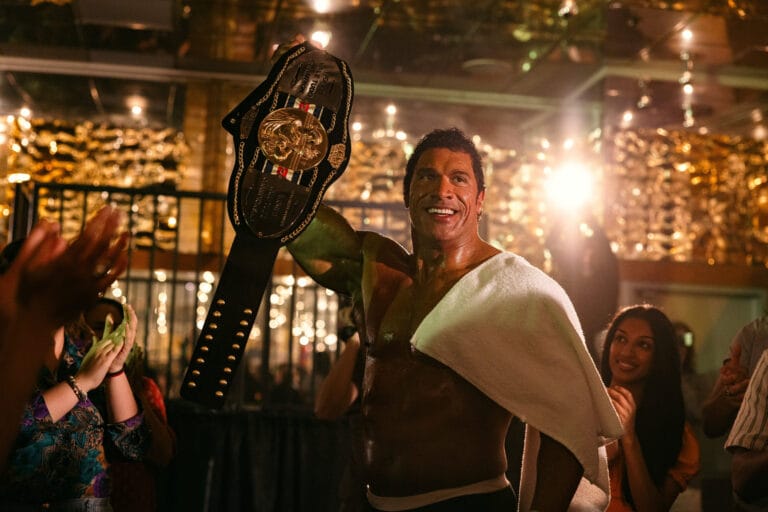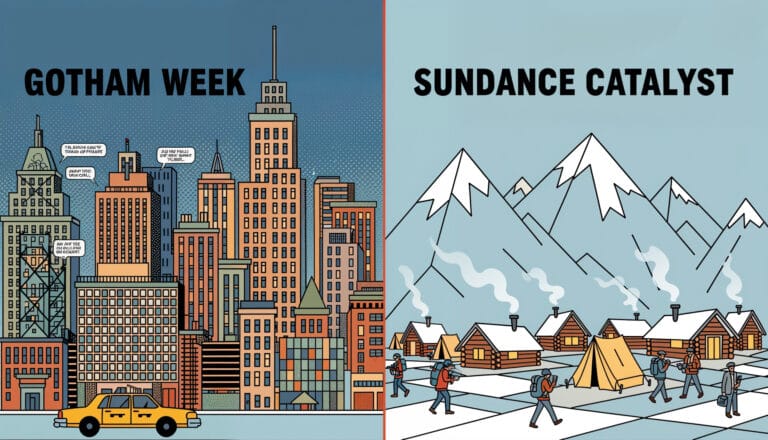Key Takeaways:
- Julia Roberts stars in Luca Guadagnino’s controversial new thriller ‘After the Hunt,’ tackling a post-#MeToo narrative that early reviews suggest may be fundamentally flawed.
- Despite Roberts’ reportedly powerful performance and Guadagnino’s masterful direction, critics are warning the script feels “ripped from another era” and handles its sensitive subject matter with troubling indecision.
- The film’s struggles highlight a critical question: Seven years after #MeToo changed everything, why is Hollywood still getting these stories wrong?
Julia Roberts doesn’t need to prove anything to anyone. With an Oscar, three Golden Globes, and a career spanning four decades, she’s Hollywood royalty. So when she chooses a project, especially one tackling something as charged as sexual misconduct in academia, we pay attention. Her latest collaboration with visionary director Luca Guadagnino, the thriller ‘After the Hunt,’ should be a cultural moment—a prestigious A-lister using her platform to engage with one of our most important ongoing conversations. Instead, if early reviews are any indication, it might become a cautionary tale. Despite what critics are calling a “stirring” performance from Roberts and Guadagnino’s signature atmospheric brilliance, the film appears to be saddled with a script that feels tone-deaf, uncertain, and potentially out of touch with the very movement it attempts to explore. Julia Roberts After the Hunt is generating buzz for all the wrong reasons, and it’s sparking an urgent question: Is this what happens when Hollywood tries to cash in on #MeToo without truly understanding it?
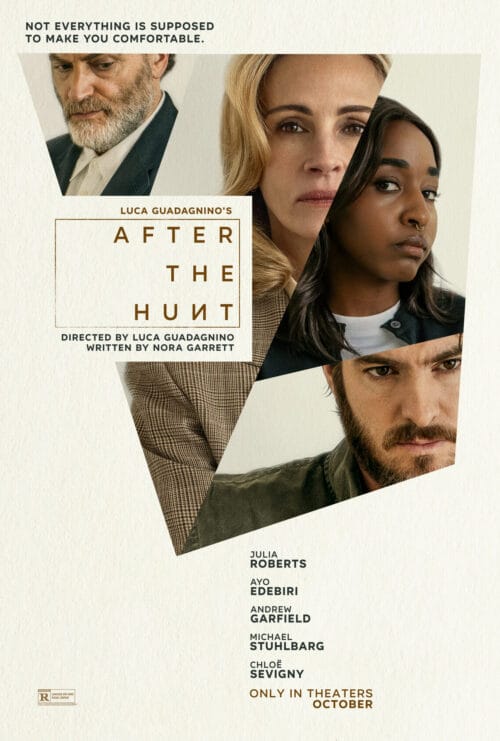
Usage Note: Used for editorial/review purposes under fair use
The #MeToo Test: Why This Subject Demands More
The #MeToo movement didn’t just change Hollywood—it changed the world. What began as a hashtag became a reckoning, a seismic shift in how we talk about power, consent, and accountability. Seven years later, the conversation hasn’t faded; if anything, it’s become more nuanced and more vital. According to the data, public interest in #MeToo remains consistently high, proving this isn’t a trend that’s going away—it’s a permanent cultural shift. That means films attempting to engage with these themes face intense scrutiny, and rightfully so. Survivors, activists, and audiences are watching to see if Hollywood has learned its lesson or if it’s simply performing empathy while missing the point entirely.
Julia Roberts After the Hunt enters this minefield with a provocative premise: a college professor (Roberts) sees her life implode when a student accuses a colleague of misconduct, forcing her to confront a dark secret from her own past. It’s a setup loaded with potential—moral ambiguity, buried trauma, institutional complicity. But intention isn’t execution. Early reviews from critics who’ve seen the film describe a narrative that feels “transposed onto our own [era] with indecision,” suggesting the screenplay hasn’t fully grappled with the complexity its premise demands. This is especially damning for a film tackling #MeToo, where every word, every character choice, and every moral stance will be dissected.
Compare this to films that got it right. Promising Young Woman was divisive but undeniably clear in its rage and its perspective. She Said prioritized journalistic integrity and the voices of survivors. These films understood that you can’t be wishy-washy when dealing with trauma and systemic abuse. You need a point of view. The worry with Julia Roberts After the Hunt is that it’s trying to have it both ways—to be provocative without being accountable, to engage with #MeToo while hedging its bets. For filmmakers, this is the lesson: when you’re working with real pain and real movements, your script must be bulletproof. Research it, workshop it, and bring in consultants. Your story’s foundation must be ethically sound before you think about aesthetics, which is why tools like those in our Filmmaking AI Workflows should support, not replace, a deeply considered narrative.
When Star Power Can’t Save a Sinking Script
Julia Roberts is one of the few actors who can open a movie on her name alone. Decades after Pretty Woman and Erin Brockovich, she remains a box-office draw and a critical darling. Her recent pivot toward darker, more psychologically complex roles—from the paranoid thriller series Homecoming to the apocalyptic tension of Leave the World Behind—has only added to her legend. In Julia Roberts After the Hunt, all reports suggest she’s giving it everything. The performance is described as “stirring,” a testament to her commitment and craft. For a film navigating morally murky waters, having an anchor like Roberts is invaluable. She can guide an audience through discomfort, make a flawed character relatable, and bring gravitas to material that might otherwise feel exploitative.
But here’s the brutal truth: even Julia Roberts can’t fix a broken screenplay. A great performance can mask problems, but it can also highlight them. When an actor is giving their all and the material still isn’t working, it becomes painfully obvious where the fault lies. Critics have already noted the disconnect—praising Roberts and Guadagnino’s craft while pointing to the “underwhelming” script as the culprit. This dynamic is frustrating for audiences and, frankly, a disservice to the actor. Roberts deserves material that matches her talent, especially when tackling something as important as this.
The lesson for creators is stark: casting is critical, but it’s not a band-aid. You cannot rely on star power to compensate for narrative weaknesses. Your job is to build a story so compelling and well-structured that a talented actor can elevate it to greatness, not salvage it from mediocrity. When developing characters, especially for high-caliber performers, dig deep. Use every tool at your disposal—from traditional character worksheets to modern AI-assisted exploration, like the techniques in our guide on 10 Powerful Midjourney Prompts for Character Design. Create roles worthy of the actors who will inhabit them, and respect your audience enough to give them a story that honors the themes you’re exploring.
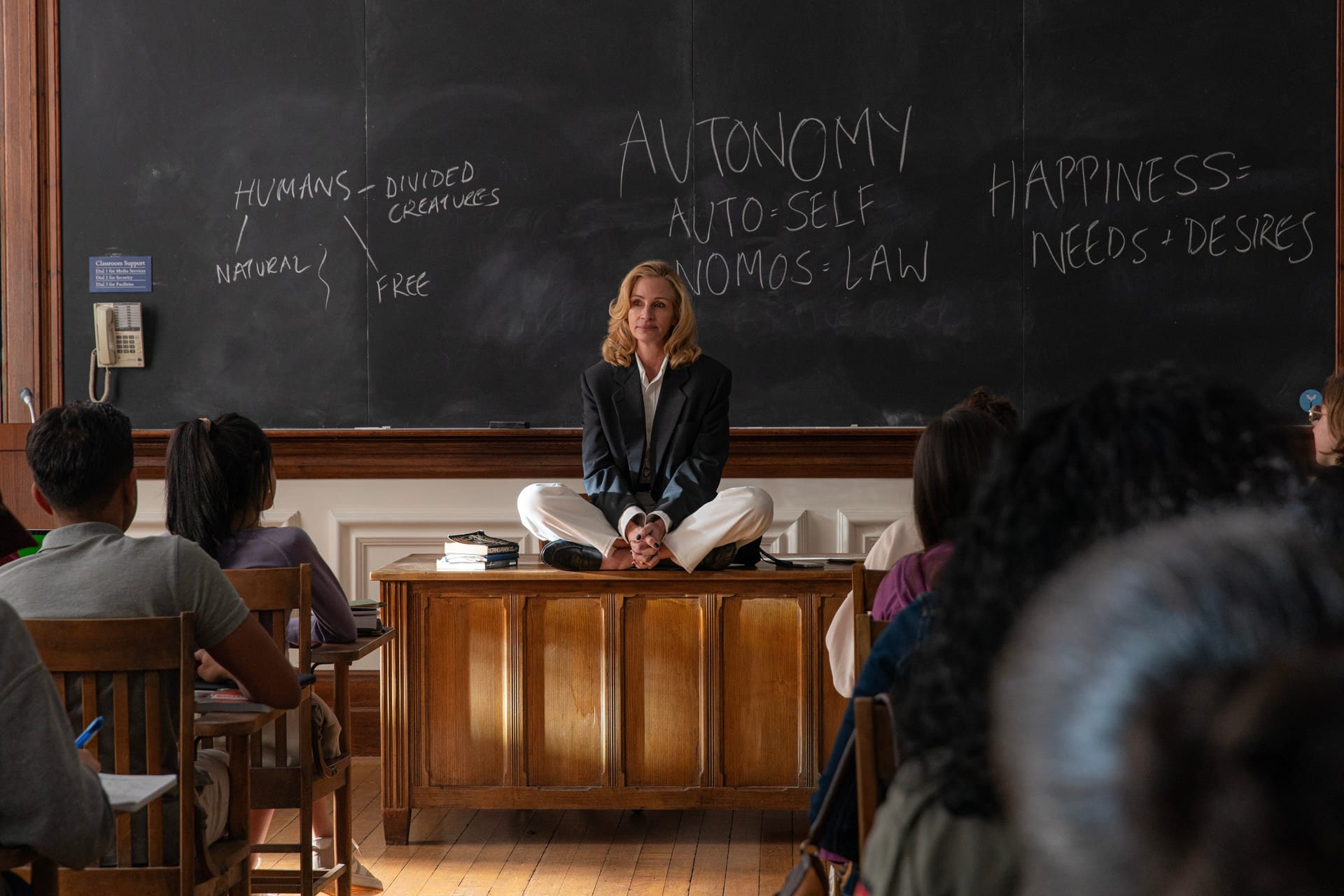
Usage Note: Used for editorial/review purposes under fair use
Guadagnino’s Vision vs. An Outdated Blueprint
Luca Guadagnino is a filmmaker’s filmmaker. His work is defined by sensory richness—every frame feels lived-in, every scene drips with atmosphere. He made us fall in love with the Italian countryside in Call Me By Your Name, then horrified us in the cold, brutalist dance academy of Suspiria. His camera doesn’t just observe; it caresses, lingers, and immerses you in a world. For Julia Roberts After the Hunt, this means we’re likely getting a gorgeously crafted thriller, one where every shadow and every glance feels intentional. Guadagnino’s direction is expected to be, as always, masterful. The problem? Even the most brilliant direction can’t save a story that doesn’t know what it wants to say.
This is the paradox facing the film. A director like Guadagnino can create a hypnotic experience, but if the script beneath it is thematically muddled or ethically questionable, his style risks amplifying the problems rather than solving them. Beautiful cinematography and deliberate pacing can make a confused narrative feel more important than it is, creating a kind of aesthetic smoke and mirrors. Audiences might leave the theater thinking, “That was stunning, but… what was it actually saying?” In a film about #MeToo, that ambiguity isn’t artistic; it’s irresponsible.
Guadagnino’s best work has always been when his vision aligns with a clear, strong screenplay—James Ivory’s adaptation for Call Me By Your Name is a perfect example. The concern with Julia Roberts After the Hunt is that this crucial synergy may be missing. The script’s reported indecision could mean that all of Guadagnino’s artistry is being poured into a vessel that can’t hold it. For filmmakers, this underscores an essential truth: story comes first. Before you obsess over shot composition or color grading, make sure your narrative is rock solid. Use pre-production tools like storyboarding and concept art—check out our Midjourney Mastery Guide for visual development techniques—but always remember they’re in service of the story, not a replacement for it.
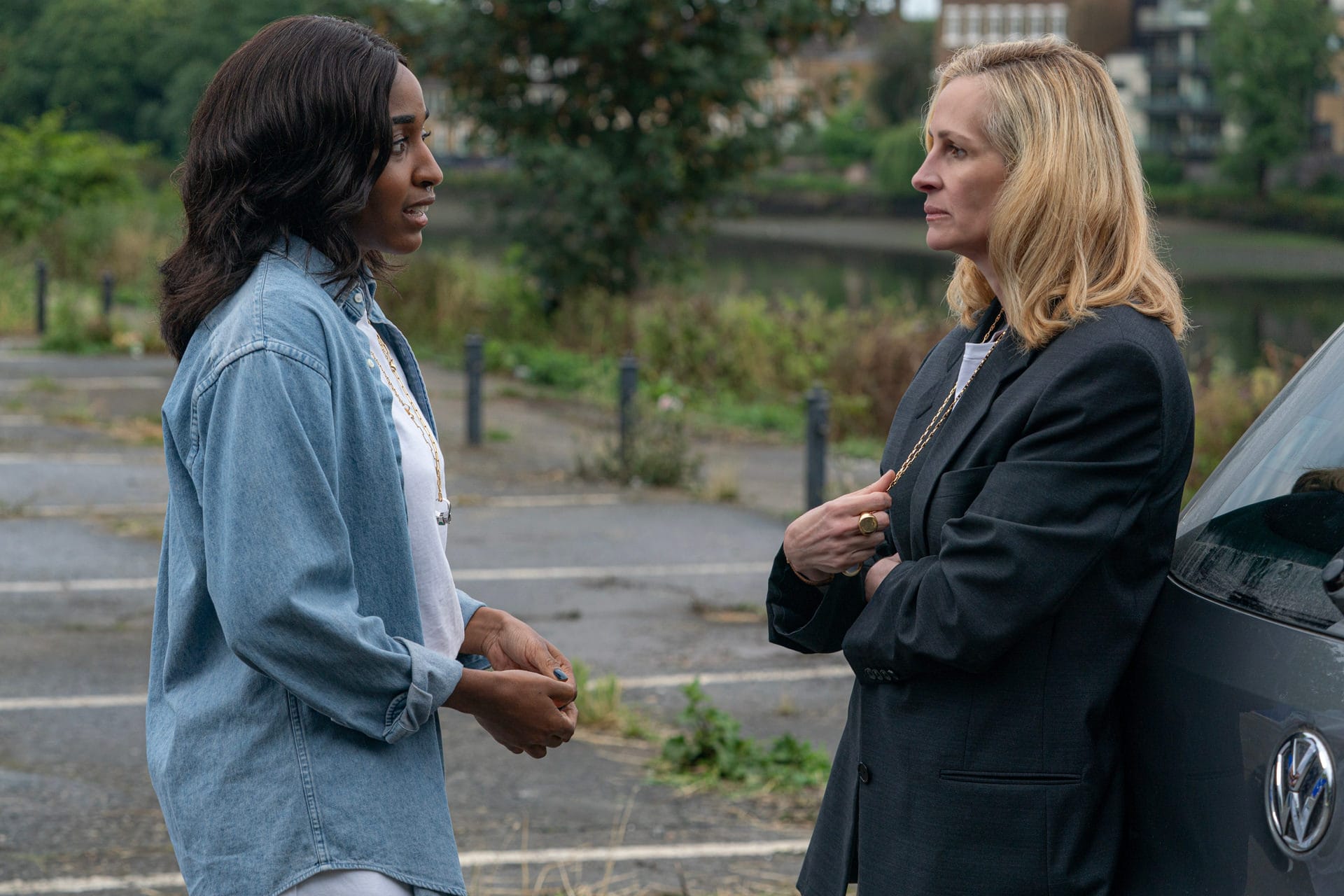
Usage Note: Used for editorial/review purposes under fair use
The Viral Verdict: Why This Matters Right Now
Here’s why this film’s reception is so critical right now: Julia Roberts After the Hunt is trending at exactly the moment when audiences are most discerning about how Hollywood handles sensitive issues. The data shows that while “After the Hunt” is experiencing a sharp spike in search interest, it’s still dwarfed by the consistent, sustained interest in #MeToo and Julia Roberts herself. This means people are curious about the film, but they’re also primed to judge it harshly if it doesn’t deliver. The conversation around the movie is becoming less about whether it’s good and more about whether it’s responsible—whether it contributes meaningfully to the discourse or just exploits it for prestige points.
This is the make-or-break moment for films like this. Get it right, and you can define the conversation. Get it wrong, and you become a case study in what not to do. Social media moves fast, and once the narrative around a film solidifies—”beautiful but tone-deaf,” “great acting, bad script”—it’s nearly impossible to shift. For Julia Roberts After the Hunt, the early reviews are setting that narrative, and it’s not favorable. The film may still find an audience who appreciates its craftsmanship, but it risks being remembered as a missed opportunity, a film that had all the right pieces but couldn’t figure out how to assemble them.
For creators watching this unfold, the takeaway is urgent: cultural literacy is non-negotiable. If you’re making a film about a social movement, you must understand it deeply—not just the headlines, but the lived experiences behind them. You must interrogate your own biases and blind spots. And you must be willing to hear criticism and adjust. The days of making “provocative” art without accountability are over. Audiences demand more, and they should. Whether you’re making a feature film or an AI-generated short, the question remains the same: What are you adding to the conversation, and have you earned the right to tell this story?
Internal Links for Further Learning
- Explore how AI is revolutionizing pre-production and storyboarding with our guide on Filmmaking AI Workflows.
- Master the art of crafting compelling visuals from text with our in-depth Midjourney Mastery Guide.
- Discover powerful AI techniques for creating unique and memorable characters in our article, 10 Powerful Midjourney Prompts for Character Design.
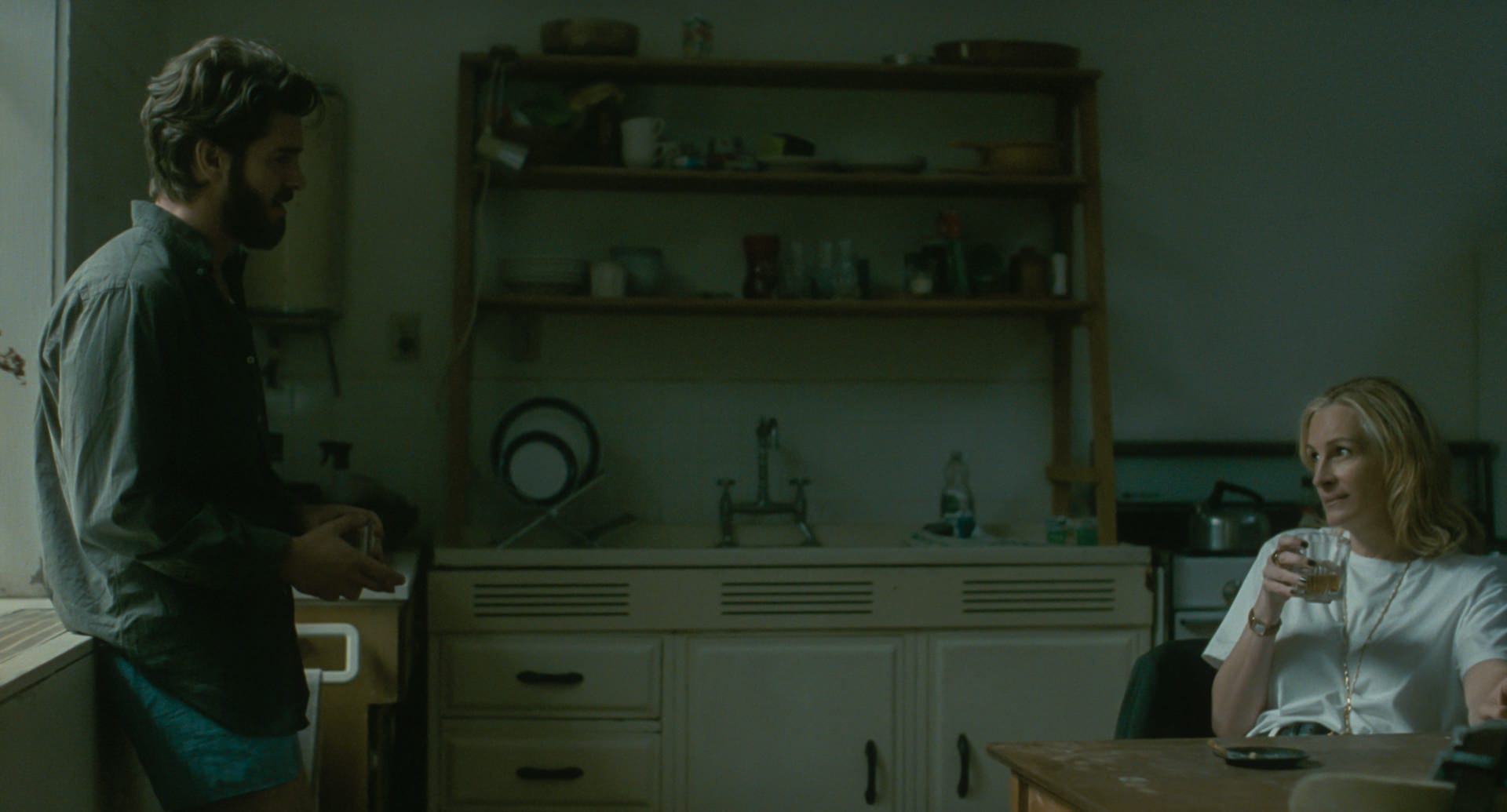
Usage Note: Used for editorial/review purposes under fair use
Conclusion
Julia Roberts After the Hunt may turn out to be a fascinating film when it’s finally released widely, but the conversation surrounding it has already become something bigger—a referendum on whether Hollywood truly understands the responsibility that comes with telling stories about real trauma and real movements. Even with Julia Roberts’ star power and Luca Guadagnino’s directorial genius, a fundamentally weak or misguided script can undermine everything. For the filmmakers, writers, and artists in our community, this is your wake-up call. In 2025, you don’t get a pass for being “well-intentioned.” Your script must be ethically sound, culturally aware, and dramatically compelling. The audience is watching, the critics are ready, and social media never forgets. Build your stories on unshakable foundations, and ensure your art adds value to the conversations it enters. To bring your own visionary ideas to life with clarity and purpose, start by mastering the fundamentals of concept and character work with tools like AI Render Pro.
The real question is: Will Hollywood learn from this, or will we be having the same conversation with the next prestige film that fumbles a #MeToo story?
FAQ
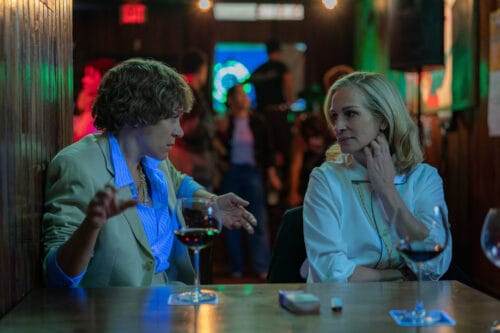
Usage Note: Used for editorial/review purposes under fair use
Who is Julia Roberts and why does her involvement matter?
Julia Roberts is an Oscar-winning American actress and one of the most bankable stars in Hollywood history. Her films have grossed billions worldwide, and she remains one of the few actors who can open a movie on star power alone. Her involvement in ‘After the Hunt’ brings immediate prestige, audience interest, and critical attention, making the film’s handling of sensitive subject matter even more scrutinized.
What is ‘After the Hunt’ about?
‘After the Hunt’ is a psychological thriller directed by Luca Guadagnino and starring Julia Roberts as a university professor whose life unravels when a student accuses a colleague of sexual misconduct. The accusation forces her character to confront a dark secret from her own past, creating a morally complex narrative set against the backdrop of the #MeToo era.
Why are #MeToo films so hard to get right?
Films dealing with #MeToo themes face immense pressure because they’re engaging with real trauma, ongoing cultural movements, and the lived experiences of survivors. These stories require nuanced scripts, clear moral perspectives, and deep cultural awareness. Audiences and critics are rightfully skeptical of films that seem to exploit these themes for prestige without truly understanding or respecting the complexity of the issues. A misstep can feel like a betrayal to survivors and can trivialize the very real pain the movement represents.
How is Julia Roberts After the Hunt being reviewed?
Early reviews of Julia Roberts After the Hunt are mixed, with critics praising Julia Roberts’ “stirring” performance and Luca Guadagnino’s atmospheric direction, but expressing serious concerns about the script. The screenplay has been described as feeling “ripped from another era” and marked by thematic indecision, particularly in how it handles its post-#MeToo subject matter. The consensus seems to be that the film’s craft exceeds its narrative foundation.
Discover more from Olivier Hero Dressen Blog: Filmmaking & Creative Tech
Subscribe to get the latest posts sent to your email.

